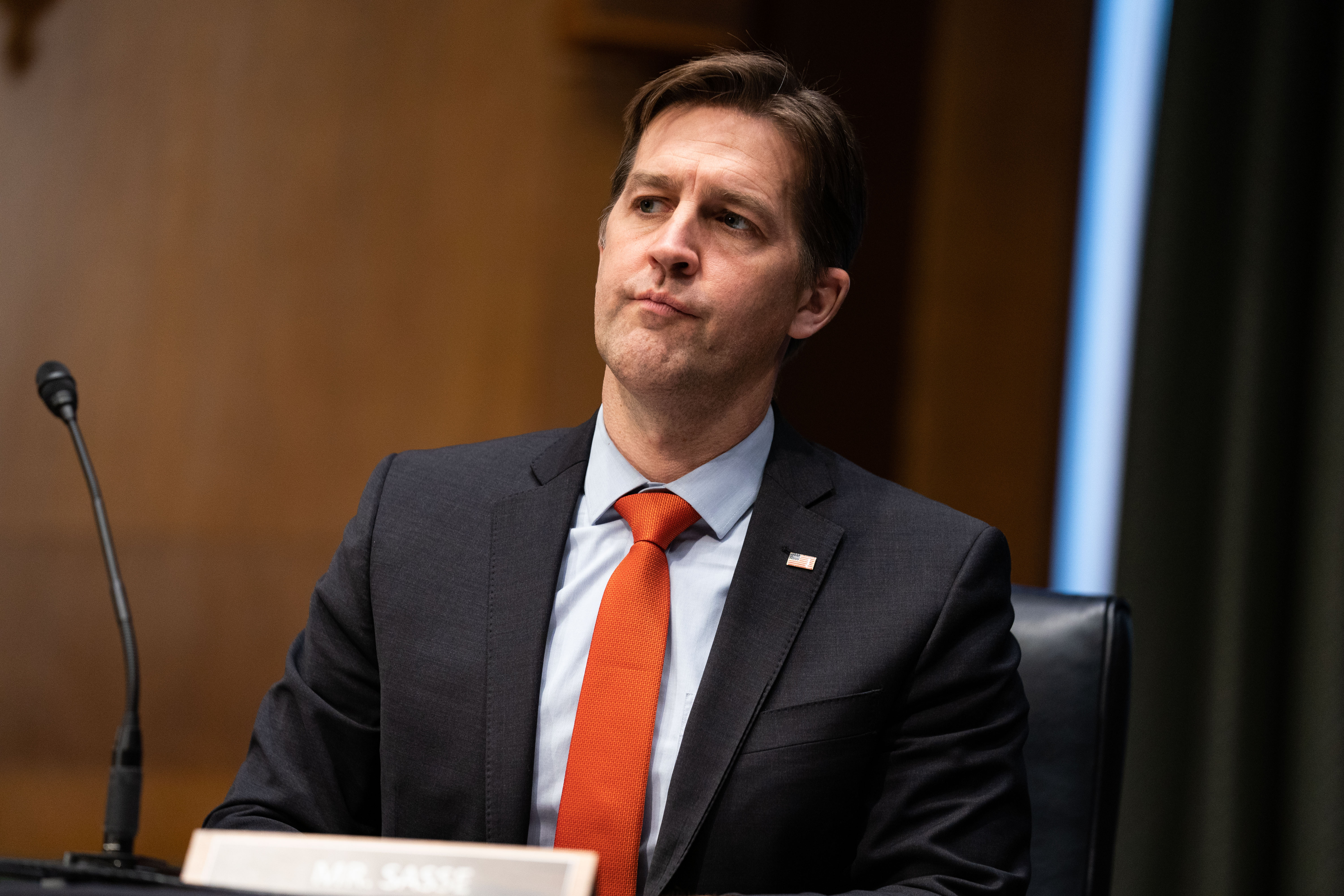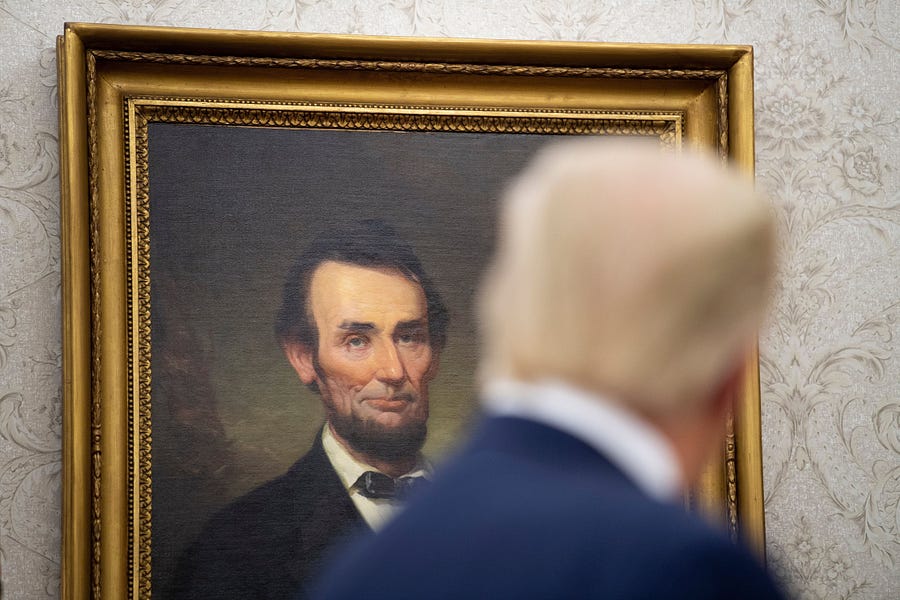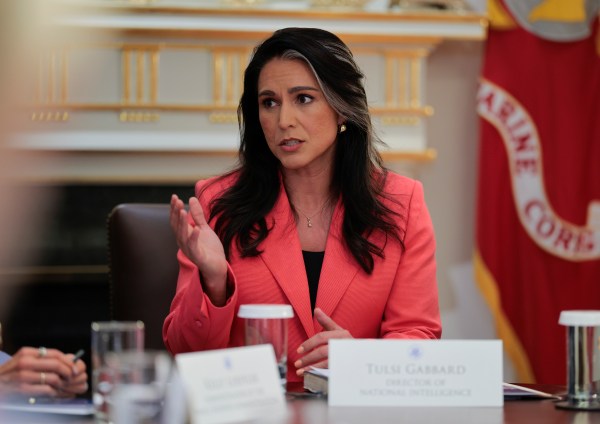On the cold, windy night of March 20, 1854, 36-year-old lawyer Alvan Bovay rounded up dozens of his neighbors in Ripon, Wisconsin, and gathered them in a schoolhouse for a meeting that would change the course of American history.
It was the group’s second gathering of the month. Weeks earlier, Bovay, a member of the Whig Party, had issued a bulletin: “A meeting will be held at 6:30 o’clock this Wednesday evening at the Congregational Church in the Village of Ripon to remonstrate against the Nebraska swindle.”
The Kansas-Nebraska Act—which would repeal the 1820 Missouri Compromise’s restrictions on slavery above the 36°30’ parallel—was barreling through Congress, and those opposed to slavery’s spread were furious. “Of all the outrages hitherto perpetrated or attempted upon the North and freedom by the slave leaders and their natural allies, not one compares in bold and impudent audacity, treachery and meanness with this, the Nebraska Bill,” read a motion adopted at that first Ripon meeting.
If the federal legislation became law, the group resolved, according to 20th-century historian A.F. Gilman, they would “throw away old party organizations” and form a new one: One “directly opposed” to the principles of the Nebraska bill. President Franklin Pierce signed the Kansas-Nebraska Act into law on May 30, and Ripon voted to dissolve their Free-Soil and Whig parties. The Republican Party was born.
Nearly 170 years later, the party that Bovay founded finds itself in the political wilderness, having lost control of the White House, Senate, and House of Representatives that it commanded just four years prior. It’s not a death sentence, by any means—the Democrats found themselves in a similar position in 2017 and have already regained the trifecta—but it feels different.
There are countless reasons the GOP will almost assuredly remain intact going forward—inertia perhaps chief among them. Over the past 167 years, the party has withstood the Civil War, rapidly shifting coalitions, and decades of Democratic control of Congress in the mid-20th century. Unless and until ranked-choice voting expands beyond Maine and Alaska, the American elections system will only have room for two nationally competitive parties.
But there’s a deep divide within the Republican Party—one that’s been building for years. It’s about Donald Trump, yes, but more so about the forces that brought him to power and sustained him once he got there: anti-institutionalism, grievance politics, negative partisanship, conspiratorial thinking, lies.
It’s not an even split. Nearly 7 in 10 Republican voters in a recent Gallup poll reported wanting Trump to remain the leader of the party going forward, while just 3 in 10 are ready to move on. And those competing factions increasingly cannot stand each other: 41 percent of Republicans surveyed favored separating to create an even Trumpier third party, 28 percent backed the idea of a new party less beholden to the former president.
The Whig Party broke apart in the early 1850s for several reasons, but primarily because the competing factions within could no longer set aside their irreconcilable differences over slavery. The GOP isn’t there yet—and it very well may never get there—but the possibility is no longer entirely out of the question.
“The Republican Party has a mess on its hands—or maybe a series of messes,” Sen. Ben Sasse, a Republican from Nebraska squarely in the classical liberalism camp, told The Dispatch earlier this month. “We’re obviously in bad shape with younger voters, we’re in bad shape with women, we’re in bad shape with suburbia and cities.”
“I don’t think there’s nearly enough introspection in the party right now about the fact that this stuff isn’t working.”
There’s been much talk since Donald Trump’s loss in November about a brewing civil war within the Republican Party. The president’s post-election lies coming to a head on January 6 only made the chatter louder.
In the immediate aftermath of the attack on the Capitol, Sen. Mitch McConnell, arguably the most powerful Republican not named Donald Trump, put out smoke signals indicating his support for the House’s impeachment process. Even Trump’s most stalwart defenders treated him like a pariah. “All I can say is count me out,” Sen. Lindsey Graham said the night of the insurrection, recounting the “hell of a journey” he’d been on with Trump. “Enough is enough.”
Rumors swirled that Trump was preparing to take his ball and go home. “President Trump has talked in recent days with associates about forming a new political party,” the Wall Street Journal reported on January 19. A “Patriot Party” that would be loyal only to him.
But a few days later, members of Trump’s inner circle publicly disavowed any effort to stand up an alternative to the GOP. They likely realized they didn’t need to.
Just weeks after Graham told reporters Trump’s actions on January 6 “were the problem,” the South Carolina Republican was on Fox News saying “the whole storyline that Donald Trump caused this by his speech has fallen apart.” On January 13, Majority Leader McConnell was “lean[ing] toward convicting Trump.” On February 13, McConnell, by then relegated to minority leader, voted to acquit him—despite maintaining that the former president was “practically and morally responsible” for the attack on the Capitol.
The seven Republican senators who pushed aside a dubious constitutional argument to convict Trump on the merits have all faced backlash at home. The Louisiana GOP voted unanimously to censure Sen. Bill Cassidy just hours after the impeachment trial concluded, and North Carolina Sen. Richard Burr—retiring in two years—met the same fate on Monday.
Josh Mandel, the leading GOP contender to replace retiring Sen. Rob Portman in Ohio, launched his 2022 bid last week declaring the election was “stolen from President Trump” and touting himself as “President Trump’s number-one ally in Ohio.” Arkansas Lt. Gov. Tim Griffin announced his 2022 campaign for governor in August 2019. He dropped out on Monday, two weeks after Sarah Huckabee Sanders, Trump’s former press secretary, jumped into the race. President Trump’s daughter-in-law Lara is arguably the frontrunner to replace Burr.
Graham said on Sunday he is planning to make a pilgrimage down to Mar-a-Lago and meet with Trump about rebuilding the Republican Party. “This MAGA movement needs to continue,” he said. “We need to unite the party. Trump-plus is the way back in 2022.”
There was a GOP civil war. It was short. Trump won.
The conflict has created hundreds of thousands—if not millions—of political refugees: Americans too conservative to sign up for the Democrats’ agenda but no longer able to stomach what their former party has become.
“January 6 was the last straw,” says Calvin Corey of Colorado. “The blatant attack against Mike Pence and instructing him to break against his oath to the Constitution was the moment where I knew I had to contemplate my affiliation with the Republican Party.”
“Me and what seems to be the base of the Republican Party have no more in common than I do with the current Democratic Party.”
Such disaffected conservatives still have some champions within the GOP—Sasse, Rep. Liz Cheney, Sen. Mitt Romney, Gov. Larry Hogan—but they are for now a distinct minority. Ten Republican House members voted to impeach President Trump for inciting a violent attack on the Capitol in an effort to overrule the democratic process; 61 voted on a secret ballot to remove Cheney from leadership for acknowledging that fact.
This is not the first time in the two-party era that one side’s various factions have diverged to the point of breaking. Nelson Rockefeller and Barry Goldwater came to the Republican Party from two different universes. The Democratic Party of the early 1960s at one point included Strom Thurmond, a segregationist, and Birch Bayh, who voted for the Civil Rights Act and led the unsuccessful charge to ratify the Equal Rights Amendment. Thurmond, and many of his fellow Southerners, eventually defected and joined the GOP, but the existing two-party system held—albeit with reshuffled coalitions.
The parties today are so neatly polarized that such a switch is almost unthinkable. New Jersey Rep. Jeff Van Drew crossed the gulf in 2019 over Trump’s first impeachment trial, but Sen. Lisa Murkowski—arguably the most moderate Republican in the Senate today—bristled at even the suggestion of trading her (R) for a (D).
“I have absolutely no desire to move over to the Democratic side of the aisle,” she said last month. “As kind of disjointed as things may be on the Republican side, there’s no way you can talk me into going over to the other side. That’s not who I am.”
There is, of course, an intermediate step between remaining a Republican and becoming a Democrat—independence—but it’s a perilous one. Forgoing the funding, campaign assistance, and built-in loyalty that comes with membership in one of the two parties is a risk most elected officials aren’t willing to take. Former Michigan Rep. Justin Amash tried it, breaking with the GOP in 2019, and ultimately decided not to run for reelection last year once faced with a host of challengers from both parties.
Murkowski, however, is unique. She won a historic write-in campaign to hold onto her seat in 2010, and Alaska recently adopted ranked-choice voting. “If the Republican Party has become nothing more than the party of Trump,” she told the Anchorage Daily News in January, “I sincerely question whether this is the party for me.”
And that really is the main dividing line within the GOP. For all the talk about libertarian versus populist economics or hawkish versus isolationist foreign policy, one’s position on Donald Trump determines standing within the party today. No Republican has been censured for opposing the imposition of aluminum tariffs. Engaging in “public acts of ridicule and calumny against President Donald J. Trump,” however, will earn you a slap on the wrist.
Sasse, the target of the above rebuke, is strikingly honest in his diagnosis of the party’s ailments.
“I think we need to admit that there’s a bunch of crap in the Republican coalition right now that isn’t at all conservative,” he said. “Personality cults aren’t conservative. Conspiracy theories aren’t conservative. Acting like politics is a religion isn’t conservative. There are things that we should admit that are a part of the Republican echo chambers right now that are gross.”
But he maintains that he’s not going anywhere. “I’m a happy warrior, so I’m not giving up on anything. I want to fight for reform,” he continued. “There are a whole bunch of different parts of the Republican coalition that have something to contribute. There are things that libertarians add to the mix. There are things that Chamber of Commerce-types add to the mix. There are pieces of populism that can be reconcilable with the Republican Party, [though] it certainly can’t be the leading edge of the movement.”

Sasse, 48, was just elected to a second six-year term. But Sen. Pat Toomey is in the twilight of his career after announcing back in October he’ll retire in 2022. The Pennsylvanian was one of only seven Republican senators to vote in favor of convicting Trump over the weekend, but he doesn’t see a divorce between the populist and conservative wings of the party coming anytime soon.
“Obviously there’s a divide over Donald Trump that’s posed a new set of challenges for the party,” he told The Dispatch. “[But] I don’t think we’re anywhere close to that, and I don’t think that’s a likely outcome.”
“Sure, there’s been some occasional departures from conservative orthodoxy,” Toomey continued. “But most of what distinguished President Trump was stylistic, and personality, and how he communicated, and demeanor, and that sort of thing. It was not as much a whole new set of economic policies.”
That is, in many ways, the point. The 140,000 Republicans that have left the party since January 6 did not do so because they disagreed with Trump’s deregulation efforts or the tax cuts he signed into law. Trump’s personality and style, in their eyes, has thoroughly corrupted the party they once held dear.
The assault on the Capitol so “disgusted” Tobin Sparfeld, a professor in California, that he changed his voter registration that day. “Since 2016 I haven’t been a proud Republican, but I felt I was doing a service by voting for Republican candidates and helping signal to the GOP that there were non-Trump conservatives like me out there,” he said. “But after January 6, I couldn’t have any association with a party that had incited such an ugly event and then refused to atone for it.”
Bryan Walters, a 31-year-old attorney, said the “final thin thread tying [him] to the GOP snapped on January 6.”
“I was sickened by what I saw,” he said. “As I considered what was happening, I concluded that continued association with the GOP would constitute aligning myself with traitors. Before I left the office that day I changed my party affiliation to ‘no party preference.’ I haven't regretted it for one second in the last month.”
Sparfeld and Walters are exactly the kind of voters Maryland Gov. Larry Hogan worries about when he says doubling down on Trump is a “terrible mistake for the Republican Party.”
“I’m very disappointed in a number of Republican leaders who have not strongly enough denounced the insurrection at the Capitol and have not strongly denounced some of the crazy, just flat-out lies being told by conspiracy theorists,” Hogan said. “I’ve been one of the few that’s been willing to speak up for at least four years—or I would say five years, from the beginning of the campaign of Trump—when I didn’t agree with some of the things that were being said and done. And I thought the Republican Party was turning off big chunks of the electorate that we couldn’t afford to.”
Hogan has long ties to the GOP. His dad, Lawrence, was a Republican congressman in the early 1970s—the first one to support the impeachment of President Richard Nixon. Lawrence left Congress the following year and mounted an unsuccessful campaign to be Maryland’s governor. He lost in the Republican primary.
The younger Hogan picked up where his dad left off, winning his first gubernatorial term seven years ago in one of the bluest states in America. And, having stoked speculation about a 2024 presidential run of his own, he isn’t ready to give up on the party quite yet. “I think we’re going to have a four-year battle for the soul of the Republican Party,” he told The Dispatch. But he conceded it’s an uphill fight. “Right now, it appears as if many of the sane Republicans that we need to … help us be that big tent are giving up because they’re being driven out by the very people that I think are responsible for a lot of the problems.”
“I’m not going to be one of those ones that’s abandoning the party or giving up,” Hogan continued. “Whether we win this fight or not, time will tell. But it’s worth fighting for, because it’s the party that I believe in—that I’ve spent my whole life fighting for. And I’m not going to let brand new crazy people try to take it over.”
Those Hogan described as the brand new crazy people, however, have already taken it over. That doesn’t mean most Republicans are QAnon adherents, or racists, or sympathetic to authoritarians willing to overthrow democracy. They’re not. The vast majority are decent, hard-working Americans who believe in limited government, strong national defense, lower taxes, and free markets. “My sense is that the traditional conservative Republican views on economic policy are still the dominant views among the coalition,” Toomey said.
But individual GOP leaders, given the current construction of the party, have an overwhelming incentive to cater to the loud minority.
“A lot of the behavior you’re seeing from GOP elected officials is a response to the loudest voices in the base, and party committees who are enforcing a protective order around Trump, who they have always viewed as a victim of the media and the establishment,” said David Kochel, a Republican campaign strategist. “That’s not where most voters are, but it does represent the most intense grassroots activists in the GOP.”
Trump’s impeachment defense team recognized this, and wielded it as a cudgel during the trial. “Nobody in this chamber is anxious to have a primary challenge,” Bruce Castor said Friday. “That is one truism I think I can say with some certainty.”
Acknowledging this reality, a smattering of ex-Republicans made some noise last week by leaking discussions of an effort to stand up a new party. “They think the GOP is irredeemable,” said Evan McMullin, a former Republican House staffer involved in the effort who mounted an independent presidential bid in 2016 and received 0.54 percent of the popular vote. “They understand how difficult it is to form a new party, but they understand that there is no other choice.”
If Sasse, Toomey, and Hogan aren’t interested in reevaluating their affiliation with the GOP, however, it’s hard to think of a relevant politician who would be.
The Whigs were out of power for less than two years before the party split apart.
Millard Fillmore left office deeply unpopular in March 1853, having signed into law the Compromise of 1850, a collection of five bills that temporarily staved off secession but compromised so much next to no one came away from negotiations happy. It admitted California to the Union as a free state, created two new territories—Utah and New Mexico—where the legality of slavery would be established through popular sovereignty, abolished the slave trade in the District of Columbia, and included an updated Fugitive Slave Law that required law enforcement officials in every state—free or not—to aid in returning runaway slaves to their masters.
The Whig Party, which arose in the 1830s in direct opposition to Democratic President Andrew Jackson, counted both Northerners and Southerners among its ranks. The coalition worked, as long as the party could coalesce around a common opponent and avoid discussing slavery too much. By focusing their efforts on promoting protective tariffs and a national bank—and opposing Jackson’s executive overreach—Whigs won the White House in 1840, and again in 1848 (though William Henry Harrison and Zachary Taylor both died in office, ceding power to their vice presidents). They held a majority in the Senate from 1841-1845, and a majority in the House from 1841-1843 and again from 1847-1849.
But Jacksonianism eventually faded, and political fault lines became less about tariffs and more about slavery. It proved fatal for the Whigs.
“The principle of this compromise gives complete ascendancy in the slave states, and in the Constitution of the United States, to the subordinate, accidental, and incongruous institution, over its paramount antagonist,” Sen. William Seward, then a Whig, said in a speech prior to the 1850 Compromise’s passing. “To reduce this claim of slavery to an absurdity, it is only necessary to add that there are only two states in which slaves are a majority, and not one in which the slaveholders are not a very disproportionate minority.”
Half a decade later, Seward was a Republican, and the Whigs were a non-factor. In the intervening years, the Whigs’ presidential candidate, Gen. Winfield Scott, got trounced by Franklin Pierce in the Electoral College, 254 to 42. The party’s representation in the House of Representatives dropped from 50.4 percent in 1849 to 30.3 percent in 1855. Congress passed the aforementioned Kansas-Nebraska Act in 1854, and it became clear Northern and Southern Whigs could no longer coexist—or win.
Two parties fought to capitalize on the Whigs’ downfall. The Republican Party, founded in 1854 by Bovay in the Ripon schoolhouse, and the Know-Nothing (or American) Party, an anti-Catholic, anti-immigrant movement that grew in response to mass Irish and German migration to the United States.
Initially, the Know-Nothings looked to be the Whigs’ heir apparent. The party—which also opposed the expansion of slavery—organized in every state, and, according to U.S. historian William Gienapp, claimed to have more than a million voters nationwide by 1855. “Popular support for Know Nothingism stemmed in large measure from its extraordinary appeal,” Gienapp wrote, “which combined opposition to the liquor traffic, hostility to the Kansas-Nebraska Act, and a searing hatred of Catholics and immigrants and of politicians who pandered to them.”
Still, the Republican Party grew, spreading from state to state across the north. “We have never seen a political convention characterized by so much harmony, and by such a universal design to do right, and not to overstep the limits of propriety in any direction,” the editors of the Wisconsin State Journal wrote upon the state party’s inaugural gathering in July 1854. “We have a platform upon which we can stand with pride. Now we must begin to labor. Every effort will be made by the opposition to create prejudice against the movement.”
The fledgling party secured a national foothold in 1854 and 1855, winning a handful of seats outright—mostly in Wisconsin, Illinois, and Michigan—and convincing a few Whigs to abandon ship and get on board.
Sen. William H. Seward of New York was one of them.
“Let, then, the Whig Party pass. It committed a grievous fault, and grievously hath it answered it. Let it march out of the field, therefore, with all the honors,” he said in an 1855 speech publicizing his switch. “The Republican organization has laid a new, sound, and liberal platform. Its principles are equal and exact justice; its speech open, decided, and frank. That is the party for us.”
John Fremont, the Republicans’ presidential candidate in 1856, lost to the Democrat, James Buchanan, 174 electoral votes to 114. But the party’s performance less than two years after its founding was “little short of astounding,” Gienapp wrote. Fremont’s strong second-place showing—Millard Fillmore received only 8 electoral votes as a Know-Nothing—“established the Republicans as the major opponent of the Democratic Party in the country and left the once powerful [Know Nothing] Party shattered beyond recovery. Defeating the Know Nothings as the successor to the Whigs was the single most important victory the Republican party would ever win in its long history.”
Following the election of 1856, Republicans made up nearly 40 percent of the House and more than 30 percent of the Senate. The party absorbed the Know-Nothings—and their anti-Catholicism—over the next few years, and by March 1861, the post-secession versions of both chambers were firmly in Republican control. Seward was appointed secretary of state in the first Republican president’s Cabinet.
Abraham Lincoln clung to what was left of the Whig Party longer than Seward, as evidenced by a letter he wrote to a friend in August 1855. “I think I am a Whig; but others say there are no Whigs, and that I am an abolitionist,” he said. “I am not a Know-Nothing. That is certain. How could I be? How can any one who abhors the oppression of negroes, be in favor or degrading classes of white people? Our progress in degeneracy appears to me to be pretty rapid.”
But Lincoln came to terms with the Whigs’ irrelevance the following year, and helped found the Republican Party in Illinois.
The present-day Party of Lincoln is quite obviously not yet in Whig-level dire straits.
As historic as it was for Trump and the GOP to lose the presidency, House, and Senate within four years—a feat last accomplished by Herbert Hoover in 1932—the 2020 election was close. Trump received 74 million votes—significantly less than Joe Biden’s 81 million, but more than any other presidential candidate in history. Per a recent Washington Post analysis, Republicans came about 90,000 combined votes shy of controlling all three levers of federal government.
But the party’s electoral prospects have taken a beating in the months since November 3, as a majority of its leaders and media boosters followed Trump down his rabbit hole of election delusion. “What is the downside for humoring him for this little bit of time?” one senior Republican official told the Washington Post in November.
The quote—asinine as it was, even at the time—reflected the opinion of nearly every Republican who could have helped put an end to the madness. But the “downside” soon became painfully clear. Seven people needlessly dead, three of them police officers. Democratic control of the Senate after losing two eminently winnable Senate races in Georgia. And a party whose brand will remain hopelessly intertwined with the president who tried to overthrow democracy.
In October, according to a Gallup survey, the Republican and Democratic parties enjoyed about equal favorability across the country: 44 percent and 45 percent, respectively. By February, however, Democrats had staked out an 11-point advantage—and the GOP’s decline was driven entirely by their own voters’ disgust.
“I honestly thought the GOP was going to take the election loss as an opportunity to separate from Trump,” wrote Mark Courchane, a retired business owner from Wisconsin. “Instead I found myself listening to people I’ve known and respected for years, parroting Trump’s remarks about the election. I couldn’t believe it.”
The GOP as it exists today is a minority party in the United States. Although the Electoral College ensures the White House remains entirely in play every four years, Republican presidential candidates have won the national popular vote just once since George H.W. Bush defeated Michael Dukakis in 1988. Republicans remain strong in parts of the country, but, having ceded much of their suburban base to Democrats over the past four years, the GOP that remains is left with a narrower path to victory on a national level.
Navigating that path forward will be complicated. A CBS News poll conducted in early February found three in four GOP voters believe it is “very” or “somewhat” important for Republicans to be loyal to the former president, but the GOP needs four out of four of those voters to remain competitive. And for that last 25 percent, loyalty to Trump may be a non-starter.
Ethan Demme, the former Republican committee chair of Lancaster County in Pennsylvania, said the party would have to “loudly denounce Trumpism” to ever earn his support back. But recognizing that’s unlikely, he left the GOP in January. “The current party requires fealty to Trump, and if you question that, you are out.”
“Trump has made everything about him,” lamented James Ballinger, a GIS analyst and high school football coach in Tulsa, Oklahoma. “You are either for him or against him. He doesn’t care about policies or principles, just if you are loyal to him or not.”
Longtime observers of Sen. Mitch McConnell know the high regard in which he holds Henry Clay, the 19th-century statesman who represented Kentucky in both the House of Representatives and the Senate. A younger McConnell wrote his college thesis on Clay at the University of Louisville, and a portrait of the “Great Compromiser” still hangs in his Senate office today. “The way Clay operated—a marvelous combination of compromise and principle—is a lesson for the ages if you’re a public official,” McConnell once said.
Clay, a founding member of the Whig Party, was instrumental in brokering a series of grand bargains over the expansion of slavery. The Missouri Compromise of 1820—passed while Clay was speaker of the House—admitted the Show-Me State to the Union as a slave state, while banning the practice above the 36°30’ parallel everywhere else. But the slavery issue became thornier over time, requiring Congress to revisit it three decades later. Clay and Democratic Sen. Stephen Douglas negotiated the aforementioned Compromise of 1850, which was signed into law by President Fillmore.
The latter compromise had its detractors, but Clay brushed them aside. “It is the duty of all who assail this compromise,” he said in a May 1850 Senate speech, “to give us their own and a better project; to tell us how they would reconcile the interests of this country and harmonize its distracted parts.”
Clay went to his death bed two years later believing that his work had warded off a splintering of not only the country, but his own party. But the splintering came nonetheless: The Whigs in 1854 and 1855, the country five years after that. On an issue as consequential as chattel slavery, there ultimately could be no compromise.
McConnell voted on Saturday to acquit President Trump on charges he incited the mob that stormed the Capitol back in January, deferring to a disputed constitutional argument that former officeholders cannot be impeached or convicted. Immediately after the vote concluded, however, McConnell returned to the floor of the Senate to reiterate his belief that Trump was determined to “either overturn the voters’ decision or else torch our institutions on the way out” of office.
Trump did not appreciate the half measure. “Mitch is a dour, sullen, and unsmiling political hack,” the former president said in a statement Tuesday. “If Republican Senators are going to stay with him, they will not win again.”
The two-step is indicative of the approach McConnell appears to be taking in charting a course for the post-Trump GOP: Keep the new voters that Trump brought into the tent, without bleeding the ones he drove away. “My goal is, in every way possible, to have nominees representing the Republican Party who can win in November,” McConnell told Politico over the weekend. “Some of them may be people the former president likes. Some of them may not be. The only thing I care about is electability.”
But like his Kentucky idol, the Senate minority leader may be trying to bridge an unbridgeable divide. Voters in a big tent conservative party can disagree on marginal tax rates, the size of the next COVID-19 relief package, how and where to deploy the United States’ military might. Can they disagree on adherence to the democratic process? Loyalty to the truth? Reality itself?
“I cannot see a path to comity with those who either believe conspiracies and lies, or are willing to pander to those who do,” said Luke Harvey, a law student and orthodox Christian from Iowa. “I am happy to make common cause with those who disagree with me on questions of philosophy, ethics, or economics; but those with whom I share neither outlook nor (in some cases) reality, are not people with whom I can join, even if it would be politically expedient to do so.”
“I believe there is a deep incompatibility between libertarian-leaning conservatives and those moved primarily by displeasure with the modern social order,” said Erick Scheminske, from Colorado. “Trump has exposed those fault lines, and it’s hard to see any path to repairing the fissure.”
“I can work with people who have different policy preferences,” emailed Sarah Solyntjes, a mom from rural Minnesota. “But I cannot align with people who are just not based in reality. It is that simple. Not everyone agrees with my take and many will continue trying to go along with the existing coalition, but it is a fundamentally unstable and unsustainable arrangement. They will lose, and the GOP will be lost in the woods for at least a generation, if not forever.”
“I don’t think [the GOP] can continue with its current makeup,” Andrew Beardslee, a former Republican from Michigan, emailed. “It’s a big tent party, sure, but the tent can’t be so big that it includes 9/11 conspiracy theorists and school shooting deniers. There’s got to be a line.”
There are plenty of GOP officials working hard to draw that line. Rohn Bishop is one of them. Chairman of the Fond du Lac County GOP in Wisconsin—which encompasses Ripon, where the Republican Party was born—Bishop said it’s important going forward to “keep the tent respectable.”
“We can be successful moving forward, but we have to be a party of more policies and less conspiracies,” he said. “That means we have to tell the truth! The election wasn’t stolen. None of the QAnon plan came true. The president straight up lied during his January 6 speech.”
“I happen to believe that as time goes on,” Gov. Hogan told The Dispatch, “the far-right kind of fringe extremists, and the conspiracy theorists, and white supremacists, and the crazy QAnon people are going to be less and less of an influence on the Republican Party.”
Rep. Liz Cheney echoed sentiments in a Fox News interview earlier this month. “We are the party of Lincoln,” she asserted. “We are not the party of QAnon, or anti-Semitism, or Holocaust-deniers, or white supremacy, or conspiracy theories. That’s not who we are.”
It’s not who Bishop is, and it’s not who Hogan is, and it’s not who Cheney is. But it may be too early to say that it’s not who the GOP is. Freshman Rep. Marjorie Taylor Greene—who arguably is all of the things Cheney says the GOP is not—has a net favorability rating among Republican voters of +7 percent, compared to Cheney’s -14 percent. In a recent Morning Consult survey, 54 percent of GOP voters said they would back Trump in a presidential primary in 2024. Mike Pence came in second, at 12 percent. Donald Trump, Jr. was third at 6 percent, tied with Nikki Haley, Trump’s former U.N. Ambassador.
Unlike many of his colleagues, Sasse says he views the GOP merely as a means to an end, rather than an end unto itself. “It’s for instrumental reasons that you’re a part of a political party,” he told The Dispatch. “I want to advance a governing conservative worldview, and the Republican Party is the best tool to do that.”
There will come a time when the GOP outlives its usefulness as an organizing body. It won’t be today or tomorrow; it may not be this year, or this decade. The current two-party system has thoroughly entrenched itself as a duopoly over the years, both legally and politically. But politicians respond to incentives. If enough people begin to reject the status quo, the status quo, over time, will change.
Would Hunter Burnett, a history teacher and evangelical Christian in Georgia, join a new party—even if it meant losing for a while? “Yes,” he said. “Shoot, at this rate I would work for it in any official position I could. The way I see it, the Democrats and MAGA Republicans don’t care much for the Constitution, so it doesn’t matter which of them is in charge. Classical liberal ideas are far too important to throw aside merely for political victories.”
Nearly 170 years ago, a few thousand people scattered across the Midwest and New England made a similar determination. “I do not know, and personally I do not greatly care, that [the Republican Party] shall work out its great ends this year, or the next, or in my life-time,” Sen. William Seward said upon shedding his Whig affiliation. “Because I know that those ends are ultimately sure.”







Please note that we at The Dispatch hold ourselves, our work, and our commenters to a higher standard than other places on the internet. We welcome comments that foster genuine debate or discussion—including comments critical of us or our work—but responses that include ad hominem attacks on fellow Dispatch members or are intended to stoke fear and anger may be moderated.
With your membership, you only have the ability to comment on The Morning Dispatch articles. Consider upgrading to join the conversation everywhere.